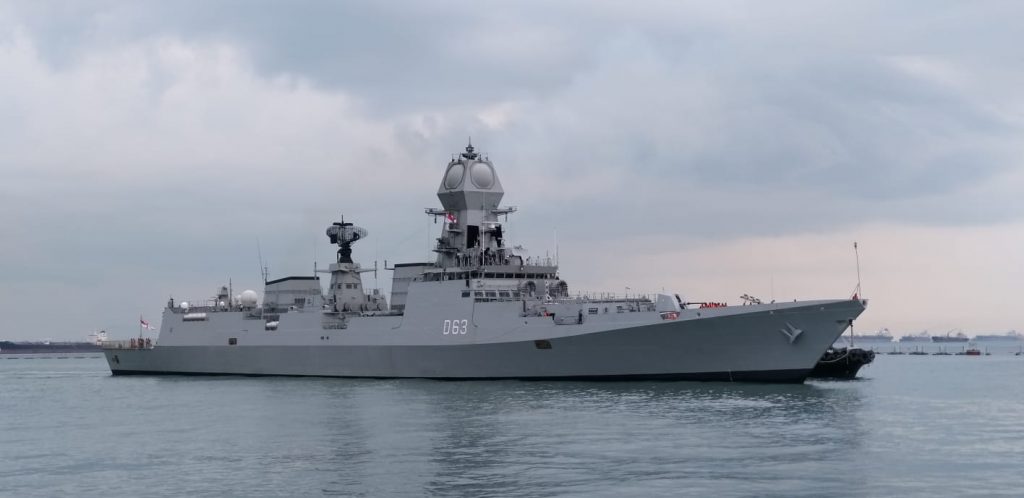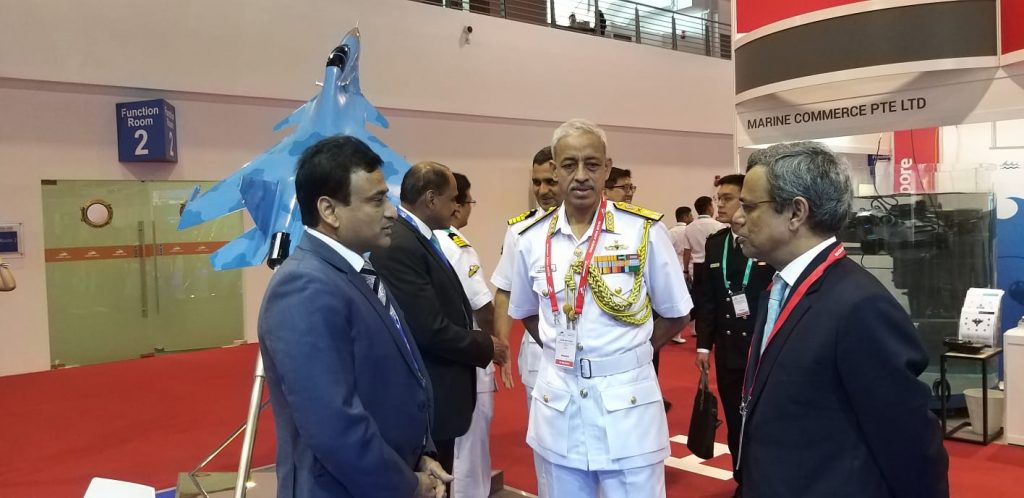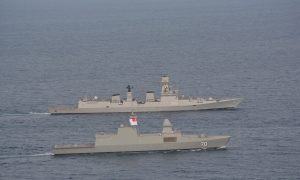 Indian naval ships Kolkata (above) and Shakti are participating in the 12th edition of the International Maritime Defence Exhibition Asia 2019 (IMDEX Asia-2019) from 14 to 16 May 2019 in Singapore.
Indian naval ships Kolkata (above) and Shakti are participating in the 12th edition of the International Maritime Defence Exhibition Asia 2019 (IMDEX Asia-2019) from 14 to 16 May 2019 in Singapore.
Vice-Admiral M.S. Pawar (below), Deputy Chief of Naval Staff, is leading the delegation.
 INS Kolkata is an advanced stealth destroyer capable of engaging threats from the air, sea and underwater. The ship was designed and built in India.
INS Kolkata is an advanced stealth destroyer capable of engaging threats from the air, sea and underwater. The ship was designed and built in India.
INS Shakti (below) is a fleet support ship which provides fuel, provisions and munitions.
 Regular participation by the Indian Navy in IMDEX and SIMBEX reflects the importance India attaches to the exercises and its broader strategic partnership with Singapore.
Regular participation by the Indian Navy in IMDEX and SIMBEX reflects the importance India attaches to the exercises and its broader strategic partnership with Singapore.
It also reaffirms India’s Act East Policy.
India is also represented by leading engineering and ship building firm Larsen & Toubro and BrahMos, which makes state-of-the-art air, sea and ground-launch cruise missiles.
Following IMDEX, Indian naval ships, along with an Indian Navy aircraft P8I, will participate in the 26th edition of SIMBEX scheduled from 16 to 22 May 2019, which is the longest uninterrupted naval exercise that India has with any other country.
The 26th SIMBEX is taking place six months after the last edition, which took place in the Andaman Sea and Bay of Bengal from 11 to 21 November 2018 and involved live weapon firings and complex military maneuvers including those of aircraft and submarines.
The 25th SIMBEX was witnessed by Singapore’s Minister of Defence Ng Eng Hen.
In October 2018, India’s Defence Minister Nirmala Sitharaman visited Singapore to participate in the ADMM Plus.
The Indian Army and the Singapore Army recently held the 12th edition of the Annual Exercise Bold Kurukshetra, a joint training exercise for Armoured Units, from 8-12 April 2019 at the Indian Army’s training facility at Babina in Uttar Pradesh.
The Air Forces of both countries will exercise together later this year in India.
India and Singapore share a strong and rapidly growing defence relationship based on deep mutual trust
and goodwill and shared interest in rules-based order, maritime security and an open, inclusive and peaceful Indo-Pacific region.
The two countries’ defence relationship includes annual ministerial dialogues, secretary-level defence policy dialogues, staff talks between the three wings of the armed forces, mutual logistics support, regular exercises and exchange of ship visits.








